#he's a white man born in 1968
Explore tagged Tumblr posts
Text
I'm keeping this on hand for whenever someone says Aidan doesn't like being seen as sexy by fans and strangers. She told him he was sexy and he made a video with her AND he bought her a drink so....

#aidan gillen#he's a white man born in 1968#im positive he doesn't mind tons of women wanting to bone him#does that mean he wouldn’t mind it if you said something gross?#NO#also doesn't mean hed want you to say anything like that in front of his partner#but in general im pretty sure he likes it#petyr baelish#littlefinger#fan encounters
62 notes
·
View notes
Text

On this day in 1992, Randy Weaver and his family were attacked by Federal law enforcement at their home on Ruby Ridge in Boundary County, Idaho. What began on that day would quickly become known as one of the most egregious examples of Federal police tyranny in the nation's history. 👇
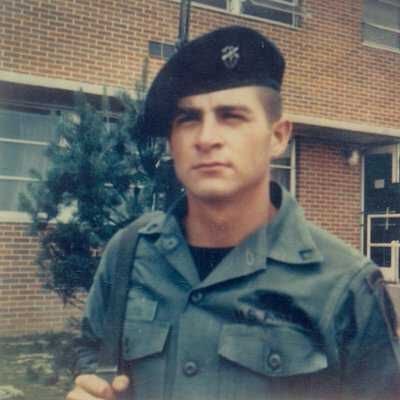
Randall Claude Weaver, who preferred to be called Pete as he hated his given name, was born in Villisca, Iowa to poor farming parents. One of four children, his family was extremely religious, though they often struggled to find a denomination that fit their beliefs. In 1968, Weaver dropped out of high school and enlisted in the US Military. 👇

While home on leave, he met his future wife, Victoria "Vicki" Jordison. In 1971, Weaver left the Army at the rank of Sergeant and a month later, he and Vicki were married. Randy quickly enrolled in Community College with the goal of becoming an FBI agent, but the high cost of tuition prevented him from completing school. He found work at the local John Deere factory while his wife became a homemaker as they began having children. 👇

Over time, they began developing a deeper and deeper distrust of the government, and Vicki began having "visions" that the Apocalypse was coming. The family decided their only option was to move off the grid. They spent time among the Amish, learning how to live without electricity. Then they emptied their life savings of $5000 to buy the small mountain property in northern Idaho. 👇
In 1984, their troubles began. Randy had a falling out with neighbor Terry Kinnison, over a $3,000 land deal. Kinnison lost the ensuing lawsuit and was ordered to pay Weaver an additional $2,100 in court costs and damages. Kinnison took his vengeance in letters written to the FBI, Secret Service, and county sheriff, claiming that Weaver had threatened to kill Pope John Paul II, President Ronald Reagan, and Idaho governor John Evans. 👇
Randy and Vicki Weaver were interviewed by the FBI, Secret Service, and the County Sheriff. Police were told that Weaver was a member of the white supremacist Aryan Nation and that he had a large gun collection in his cabin. Weaver denied the allegations, and no charges were filed. 👇
The Weavers filed an affidavit in 1985, claiming their enemies were plotting to provoke the FBI into killing them. The couple wrote a letter to President Reagan, claiming a threatening letter may have been sent to him, over a forged signature. No such letter ever materialized but, seven years later, prosecutors would cite the 1985 note as evidence of a Weaver family conspiracy against the government. 👇
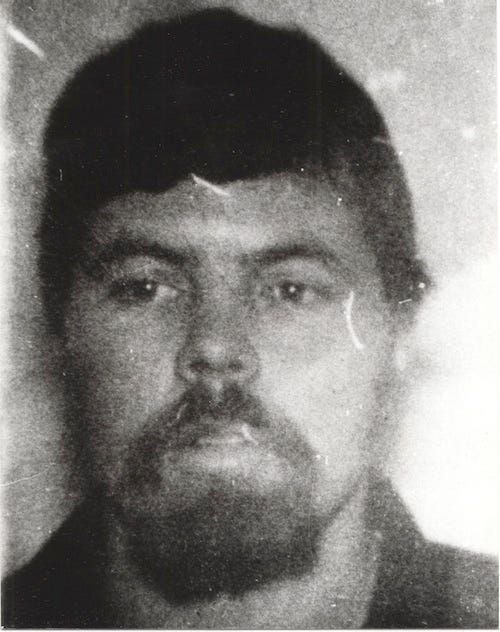
One of the Weaver's neighbors, Frank Kumnick, was a member of the Aryan Nation, and invited Randy to attend a World Aryan Congress in 1986. Unknown to either man was that Kumnick was already a target of the ATF. 👇
While at this "Congress", Weaver met a man posing as a gun dealer who was actually an undercover ATF agent. Randy invited this man to his home to discuss forming a resistance group against what they called the "Zionist Occupation Government". 👇
Later that same year, the ATF would charge Weaver with selling that informant two sawed-off shotguns. 👇
The ATF offered to drop all charges, as long as Randy was willing to become a confidential informant. Randy refused. The indictments came down shortly after, claiming that Randy was a "bank robber" with an extensive criminal history. These allegations were of course fabricated. However, Randy was still arrested and then released, pending trial. 👇
Trial was set for February 20, 1991 and subsequently moved to February 21, due to a federal holiday. Weaver’s parole officer sent him a letter, erroneously stating that the new date was March 20. A bench warrant was issued when Weaver failed to show in court, for the February date. Randy was, despite being completely unaware of it, officially labeled a fugitive from justice. 👇
The U.S. Marshals Service agreed to put off execution of the warrant until after the March 20 date, but the U.S. Attorney’s Office called a grand jury, a week earlier. It’s been said that a grand jury could indict a ham sandwich and the adage proved true, particularly when the prosecution failed to reveal parole officer Richins’ letter, with the March 20 date.
The episode fed into the worst preconceptions, of both sides. Marshalls developed a “Threat Profile” on the Weaver family and an operational plan: “Operation Northern Exposure”. Weaver, more distrustful than ever, was convinced that if he lost at trial, the government would seize his land and take his four children leaving Vicki, homeless. 👇
Federal surveillance of Ruby Ridge began. Marshalls attempted to negotiate over the following months, but Weaver refused to come out. Several people used as go-betweens, proved to be even more radical than the Weavers themselves. In a rare show of reason under the circumstances, Deputy Marshal Dave Hunt asked Weaver neighbor Bill Grider “Why shouldn’t I just go up there … and talk to him?” Grider replied, “Let me put it to you this way. If I was sitting on my property and somebody with a gun comes to do me harm, then I’ll probably shoot him.” 👇
On April 18, 1992, a helicopter carrying media figure Geraldo Rivera for the Now It Can Be Told television program was allegedly fired on, from the Weaver residence. Surveillance cameras then being installed by US Marshalls showed no such shots fired and Pilot Richard Weiss, denied the story. Even so, a lie gets around the world, before the truth can get its pants on. (Hat tip, Winston Churchill, for that bit of wisdom). The ‘shots fired narrative’ now became a media feeding frenzy. The federal government drew up ‘rules of engagement’👇
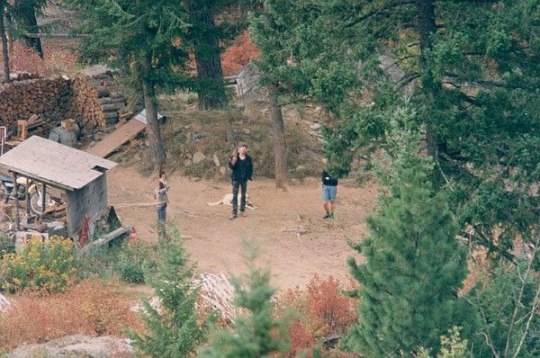
On August 21st, 1992, six Deputy US Marshalls entered the property to provide ground level reconnaissance and choose a spot to ambush and arrest Weaver. Deputy Marshall Art Roderick threw rocks at the cabin to see how the dogs would react. The cabin was at this time out of meat and, thinking the dog’s reaction may have been provoked by a game animal, Randy, a friend named Kevin Harris and Weaver’s 14-year-old son Samuel came out with rifles, to investigate. Vicki, Rachel, Sarah and baby Elisheba, remained in the cabin. 👇
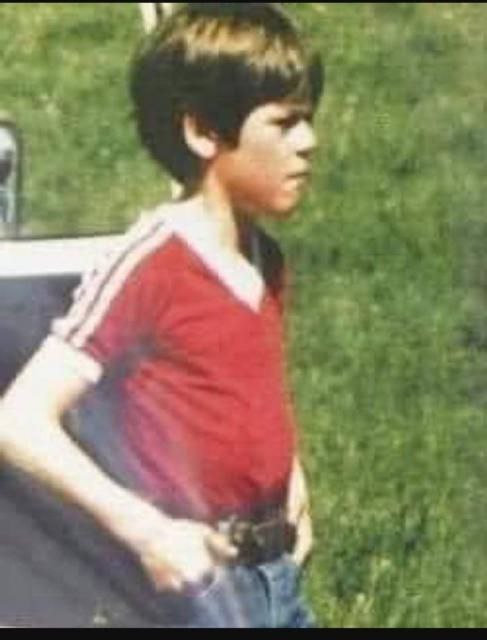
When Striker discovered the team's locations, on of the Marshalls shot and killed the dog. This caused a brief firefight. By the time the shooting stopped, Deputy US Marshall William Degan had been shot and killed by Harris. Tragically, 14 year old Sammy was also dead, shot in the back by the Marshalls while trying to help his dog. 👇

The situation quickly spiraled. The National Guard was called in, as well as SWAT teams and helicopters. The Weavers moved Sammy's body into a small shed near the main house, then retreated into the house. 👇
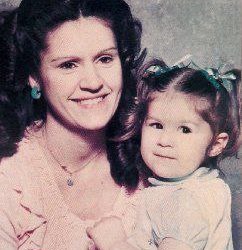
The next day, August 22nd, Weaver and his 16 year old daughter Sarah, along with Harris, left the main house to enter the shed Sammy's body lay. FBI sniper Lon Horiuchi fired from a position some 200 yards distant. The bullet tore into Weaver’s back and out his armpit. The three raced back to the cabin. Horiuchi’s second round entered the door as Harris dove for the opening, injuring him in the chest before striking Vicki in the face as she held baby Elisheba, in her arms. Vicki did not survive. 👇
Two days later, FBI Deputy Assistant Director Danny Coulson wrote the following memorandum, unaware that Vicki Weaver lay dead:
“Something to Consider
1. Charge against Weaver is Bull Shit.
2. No one saw Weaver do any shooting.
3. Vicki has no charges against her.
4. Weaver’s defense. He ran down the hill to see what dog was barking at. Some guys in camys shot his dog. Started shooting at him. Killed his son. Harris did the shooting [of Degan]. He [Weaver] is in pretty strong legal position.” 👇
The siege of Ruby Ridge would drag on for ten days. Kevin Harris was brought out on a stretcher on August 30, along with Vicki’s body. Randy Weaver emerged the following day. Subsequent trials acquitted Harris of all wrongdoing and Weaver of all but his failure to appear in court, for which he received four months and a $10,000 fine. 👇
In August 1995, the US government avoided trial on a civil lawsuit filed by the Weavers by awarding the three surviving daughters $1,000,000 each, and Randy Weaver $100,000 over the deaths of Sammy and Vicki Weaver. Randy would pass away on May 11, 2022, after a long illness.

The atrocity at Ruby Ridge would not be the end of the story. Six months later, many of the same agents would be involved at the siege of the Branch Davidian compound in Waco, Texas.
The story of the Weaver family and Ruby Ridge reminds us all that just wanting to be left alone is often not an option. The Federal government, in particular the FBI, ATF, and US Marshalls, used deception, outright lies, and terroristic tactics, all in an attempt to entrap a man who refused to become an informant against his neighbors. 👇
History is not what we were told. Everything is a fμ¢%in' lie. 🤔
Posted August 21, 2024
#pay attention#educate yourselves#educate yourself#knowledge is power#reeducate yourself#reeducate yourselves#think about it#think for yourselves#think for yourself#do your homework#do your research#do your own research#do some research#ask yourself questions#question everything#ruby ridge#history lesson#hidden history#history#lies exposed
512 notes
·
View notes
Text
COME ONE, COME ALL to the MOSTE ILLUSTRIOUS TOURNAMENT of the FINEST, the MOSTE PUISSANT and HOTTEST MEN MEDIEVAL MEDIA HAS TO ITS CREDIT.
Be it known that we shall accept submissions of the hottest men OF THE PEOPLES’ CHOOSING from any live-action* TV or movie media property set between the years AD 500 – 1550 (Tudors WELCOME!!), and any fantasy properties which emulate said period!
KNOW ALSO that we, by the grace of this fine hellsite and with the counsel of the moste honorable and illustrious @hotvintagepoll (many thanks), have made
THESE GUIDELINES here given:
ANY HOT GUY who appears in any movie or TV show released in ANY YEAR, from ANY COUNTRY, shall be deemed eligible for entry. Below are listed examples of eligible properties. If YE BE NOT CERTAIN whether your hot guy is eligible, submit him anyway!
Examples of Eligible Properties: The Lord of the Rings Trilogy (2001-03), Game of Thrones (2011-19) House of the Dragon (2022), Wolf Hall (2015-2024), The Tudors (2007-2010), Ladyhawke (1985), The Princess Bride (1987), The White Queen (2013), Rise of Empires: Ottoman (2020-2022), Vikings (2013-2020), The Last Kingdom (2015-2022), Diriliş: Ertuğrul (2014), A Knight’s Tale (2001), BBC’s Robin Hood (2006-3009), The Last Duel (2021), The Story of Minglan (2018), The Borgias (2013), Robin Hood (1939), Outlaw King (2018), Pilgrimage (2017), Legend (1985), Braveheart (1995), The Green Knight (2021), Excalibur (1981), Beowulf & Grendel (2005), The Lion in Winter (1968), Robin Hood: Men in Tights (1993), The Black Adder (Blackadder Series 1, 1982), Rashomon (1950)
Remember: This is just a list of examples—WOW ME!
These following titles are examples of properties that do not fall within or emulate the stated time period and therefore DO NOT QUALIFY: The Three Musketeers (Any Version), Pirates of the Caribbean (2004), Barbarians (2020), Gladiator (2000), Ben Hur (1959), Shogun (2024), Elizabeth (1999), 300 (2006), Troy (2004), Xena: Warrior Princess (1995-2001), Disney's Robin Hood (1973)**, Yojimbo (1961), Shakespeare in Love (1998), King Arthur (2004)***
For the purposes of this tournament, "Man" and "Guy" are defined as any bi-pedal humanoid male character played by a man. As such, characters belonging to non-human races such as Hobbits, Orcs, Elves, Demons, Fauns, Werewolves etc. ARE admissible, and, indeed, encouraged.
If you have propaganda you forgot to include in your submission, just hold onto it and send it in an ask after the Tournament begins.
You may submit as many hot men as you like but please submit only ONE ENTRANT per submission.
Do not hesitate to submit ANY hot guy you think may qualify, no matter how popular he is. There is no such thing as a shoo-in with these tournaments. If you think "Someone MUST have submitted him already!" Everyone else is probably thinking that too and then he may well NEVER get submitted and we don't want that.
Do not worry about how many submissions your hot guy might have had already--I need to get a sense of who the strongest contenders are in order to fairly seed the draws, and the best way to do that is volume of submissions.
We are voting on the hotness of the characters. While the actors who portray them are of course a major factor in this, we are not voting on the actors themselves, therefore propaganda pertaining to the actors real lives (aside from anecdotes relating to their portrayal of the character) is not admissible.
By that same token, in the case of historical figures (e.g. Henry VIII) we are judging hotness based on the fictionalized portrayals of them in these properties, not on historical fact.
Regarding immortal/time-travelling/dimension-hopping/extremely long-lived characters, regardless of when the character was born, the main action**** of the story must take place within the Medieval Period (see dates listed at the top of this post) or Medieval-esque fantasy fantasy realm in order for them to be eligible for submission. As such, characters like the Pevensie brothers (The Chronicles of Narnia) and Ash Williams (Army of Darkness) are admissible, but Asgardians (the MCU Thor films) are not.
I, as the Administrator and Master of Revels of this tournament, am exercising discretion in the admittance of characters from works by Shakespeare, since many of them have no set date.
Re: characters adapted from books/written works - Book quotes by/ about your character are not admissible as Propaganda for their tv/ movie counterparts unless said quotes were also written into the show/movie.
Book illustrations and fanart are not admissible Propaganda
SUBMISSIONS SHALL REMAIN OPEN UNTIL MIDNIGHT, JULY 1st
The Tourney shall begin at a date yet to be determined with the Melee (Qualifying Rounds), wherein the entrants with the fewest submissions and least propaganda will duke it out in a free for all brawl to determine who will enter the Lists.
SUBMIT YOUR ENTRANTS HERE TODAY!!!
-- Master of Revels

*The "live-action" qualification does have a caveat: exception may be made for those CGI films which were all the rage in the mid-00's that used the motion-capture and likeness of the actors; for example characters from, Robert Zemeckis's Beowulf (2007) are admissible.
** this one doesn't qualify, not because it isn't the right time period, but because it falls solidly under the "Animated" category.
***Yes, sadly we are deprived of the beautiful countenances of Clive Owen, Mads Mikkelsen, Ioan Gruffudd et al because the producers of this film in their infinite wisdom and in an attempt to seem "more historically accurate" chose to set it during the Roman withdrawal from Britain, which occurred in the 5th Century (About a CENTURY earlier than Authurian tradition) and is generally agreed to have ended by AD 410. It therefore does not fall under the Medieval umbrella and is not eligible for submission.
**** "Main Action" here defined as "More than half an hour of a movie and more than two episodes of a series"
#medieval fantasy#asoif/got#lord of the rings#a knight's tale#the last kingdom#vikings#the princess bride#house of the dragon#medieval films#tumblr polls#fantasyandmedievalmelee#tournament poll#game of thrones#got
134 notes
·
View notes
Text
Athena and her makeovers! Or as my friend @artsofmetamoor said "a fashionista"

First she cleansed her face with a divine ointment, similar to the one the Kythereia (Aphrodite=lady of Kythera or the one born in Kythera) uses when she desires to join the dances with the Charites and he made her look taller and stouter/more majestic and he made her look whiter than the elephant's tusk ivory
(Translation by me)
Man Athena surely loves to give her two lovebirds makeovers doesn't she?! And yay for some partial Penelope description! She is probably tall for a woman (we do not know her actual height of course) and stoutly or regarly built and has ivory-white skin! And all of the above are toned up by Athena!
Makes me feel even more how amazing the casting of the phenomenal Greek actress Irene Papas was as Penelope in the Italian-German-French co-production of the Odyssey in 1968! (my favorite live action adaptation to this day!) I mean...look at this beauty!

The face, the eyes...even her age is great choice and yet she remains a beauty! And such commanding presence and intense look too! She was just perfect for this role!
#greek mythology#the odyssey#tagamemnon#odyssey#homeric poems#penelope#penelope of sparta#odysseus x penelope#penelope x odysseus#odysseus and penelope#odypen#penelope of ithaca#penelope odyssey#athena#athena pallas#homer odyssey#the odyssey 1968#athena is such an odypen shipper!#homeric epics#homer's odyssey#odysseus#homer#greek myths#greek mythology memes#penelope's true beauty sleep!#penelope description
42 notes
·
View notes
Text

Christopher McCandless, The Man who Hiked to Death
Born February 12th 1968, in Inglewood, California, Christopher McCandless was immediately plunged into a chaotic family. His sister, Carine McCandless, documented in her book ‘The Wild Truth’ that they shared their home with six half-siblings. Carine also alleged that her parents were abusive, both physically and verbally, toward the McCandless children. She documented how her father was an alcoholic, and their mother often fed off his evil energy, inflicting her own abuse upon them.
The McCandless never stayed in one place for long as Walt McCandless worked for NASA as a rocket scientist, taking him across the U.S. Eventually, the family settled in Virginia long enough for Christopher and Carine to graduate.
Following his graduation from university, Christopher knew he needed to travel. He had spent much of his childhood moving from town to town, state to state, and this had a profound impact on his outlook on life.
He only stayed in one place for a short time, seeing the beauty in exploring the world. In mid-1990, Christopher left Virginia for new pastures and began driving West. He stopped in towns and cities along the way, picking up odd jobs to make ends meet. By April of 1992, Christopher was itching for another adventure, and that is when he decided to make his way to Alaska, the final frontier of the U.S.
Incredibly, Christopher managed to hitchhike from Carthage, South Dakota, to Fairbanks, Alaska, a whopping 3,000+ miles through Saskatchewan, Alberta, British Columbia and Yukon, Canada. Eventually, he arrived, and he began planning his largest expedition yet. He wanted to hike through the Denali National Park. The park covers over 6,000,000 acres in the middle of Alaska. Communities are few and far between, with many Alaskans congregating near large towns and cities.
Despite the harsh weather conditions of Alaska, Christopher McCandless seemed ill-prepared. Fellow hikers and locals recalled seeing Christopher arrive in Fairbanks carrying only a backpack. He also stood out for his ‘Hippie-like’ appearance, choosing to remain unkempt and dirty. April 28th 1992, would mark the last day that Christopher McCandless would ever see the seeds of civilisation.
That day, Jim Gallien was flagged down by Christopher, who was looking for a ride to the Stampede Trail in the Denali National Park. Gallien later told author Jon Krakauer that he had doubts about the 24-year-old’s survival from the start. When he got into his car, Christopher had minimal clothing and a backpack. Christopher explained that he was carrying a 10 lb bag of rice, a Remmington semi-automatic rifle and a pair of Wellington boots inside his bag. Gallien was, in fact, so concerned that he offered to drive Christopher to Anchorage so that he could purchase the necessary equipment for him. He knew how harsh and unforgiving the Alaskan landscape could be, and per population, it has an alarmingly high missing persons rate. Throughout their drive, Christopher assured Gallien that he would be fine and had hiked many times before.
It wasn’t until months later that Gallien learned Christopher’s real name, as when he had picked him up, he had simply given the name ‘Alexander Supertramp’. The only item that Christopher accepted from Gallien was a map. Before leaving, Christopher asked Gallien to snap a picture of him at the Stampede Trail, making this one of the last photographs ever taken of Christopher McCandless.
For two days, Christopher hiked the Alaskan wilderness, soaking in the beauty of the Denali National Park. After a gruelling march, Christopher made it to an abandoned blue and white bus. Whilst the exterior was rusted and hadn’t been loved for some time, Christopher recognised it was the perfect shelter and base camp. He wasted no time setting up his gear and prepping his new home.
The blue and white bus that would become a notorious tourist hotspot was not Christopher’s intended finish line. According to his diary, which was later discovered with his body, Christopher had planned to hike through the park and to the Bering Sea. Christopher remained at the blue and white bus for two months, eagerly journaling every step. Christopher wrote in his diary that he had begun consuming the roots of the Hedysarum Alpinum plant. Christopher also detailed in his diary how he had trapped and hunted small game and wildlife. He had successfully hunted a moose/caribou with his rifle. However, the meat was rotten by the time he came to consume it. With just 10 lbs of rice and foraged plants, Christopher rapidly began losing weight.
The lack of food and people was beginning to get to Christopher, who heavily documented his trip via his journal and camera. On July 3rd 1992, Christopher packed up his things, leaving the blue and white bus behind.
With a map in hand, Christopher hoped to reach civilisation once more, but the landscape had changed and he became distressed and returned to the blue and white bus to wait out the days until the river froze over once more.
On July 14th, he also began to incorporate the seeds of the Hedysarum Alpinum plant into his diet, as was documented in his diary. The meagre diet of plant material and small animals was nowhere near enough to sustain Christopher, who continued to waste away. As he continued to weaken, he lost his energy and ability to forage further afield for plants and fruits.
Christopher McCandless made his final diary entry on what he noted as ‘Day 107’. The entry simply reads, “Beautiful blue berries.” Author Krakauer noted that days 108 through 112 had / (slashes) but no words, and after Day 113, no more entries were made. Sometime around these final diary entries, Christopher wrote, “I have had a happy life and thank the Lord. Goodbye, and may God bless all.” It is clear Christopher knew his end was coming, and he had made his final preparations and peace with his fate.
It wasn’t until September 6th 1992 that the grizzly truth would be revealed.
That day, hikers in the Denali National Park came across the blue and white rusted van that Christopher had once called home.
These hikers had the same idea as Christopher and were eager to use the bus as shelter.
When they approached the bus, they found a note taped to the door which read “Attention possible visitors. S.O.S. I need your help; I am injured, near death and too weak to hike out. I am all alone; this is no joke. In the name of God, please remain to save me. I am out collecting berries close by and shall return this evening. Thank you, Chris McCandless, August.”
As they moved through the bus, they saw the familiar outline of a human in a sleeping bag. After reading the note, they hoped that Chris had managed to survive, but all hopes were dashed when the stench of decay overcame them. The hikers took a closer look, and their worst suspicions were confirmed. Christopher McCandless was deceased, his body decaying in a sleeping bag in the back of a rusted-out bus.
Alaska State Troopers and Denali Park staff were summoned to the bus where Christopher’s body was recovered. His family were notified of the terrible news, and preparations for his body to be returned to Virginia were made.
Christopher’s passing marked a turning point in the culture surrounding hiking and travelling. He had wilted away in the wilderness when a bridge and cabin were within a few miles of his location.
36 notes
·
View notes
Text
Bored so heres a list of iconic thing Melinda has done (not this is a list for my fanfic so that I don’t forget lmao)
Marrying a man notorious for being ugly and anti social and creepy and proceeding to actually love him
Before she got married she did a photo shoot for a sewing pattern book and her eye makeup went viral and everyone wanted her long eyelashes
Her blue wedding was famous and reported on for the 30th anniversary of VOGUE Ostania where she graced the cover
Her wedding hairstyle was so popular it became a trend (yes it’s that deranged hairstyle Yor does but a bit bulkier)
For her 20th birthday, Donovan got her a blue hillside mansion that is like an architectural landmark that’s literally so iconic it’s under a preservation act
A movie was actually filmed there and it was one of the high grossing movies in Europe
Popularized the mini skirt in Ostania all the way back in the 50s
The first ever private jet to be owned by an Ostania was a gift she got for her 25th birthday. It was baby blue of course. Donovan got it for her because she loved to travel but found the usual methods to be a hassle. In 15 years he has bought her 3 private jets
After being harassed by the press for not having kids she told a reporter to “stay out of her vagina” and got cancelled for like 20 minutes
She was in an American movie shortly but it was successful
She owns a classic 1950 Cadillac that was custom made to blue. She got it for her 21st birthday after she got her license
Between 1954 to 1963 she was in a variety of ads for War and military recruitment. This coincided with the war between the east and west following the supposed assassination of the Prime minister and deputy prime minister of Ostania even roping poor Demetrius into it
There is series of fighter jets known as the MLD30 series when is obviously named after her. They dropped bombs that would release a blue smoke that would choke people give them terrible rashes
The tv show Berlint in Love is based on her with the original female lead being named Linda. It was based on the rumors that she was cheating on Donovan with a young attractive man who worked for the Desmonds (a young Jeeves who she was seen photographed with a lot)
Melinda love reptiles and has a bunch of exotic ones in her house most notably her massive 20+ year old 200 pound sulcata Tortoise and a yellow boa that she ended up giving away when Demetrius was born because she worried it would kill him. She also kept a Greek tortoise in Donovan’s office (the prime minister one where he had to meet with other government officials)
A video touring her house was filmed and to be released on tv after coloured tv was introduced in the US in 1954, it aired overseas and in Ostania (in black and white) but the official coloured version was re-aired in 1968 when coloured tv became available as one of the first official broadcasts which only reignited interest in her
That’s all that I’ve got baby
#spy x family#sxf#melinda desmond#her life was so good before Damian was born#literally a social icon
14 notes
·
View notes
Text

Sergeant First Class Perry James Henry Watkins (August 20, 1948 - March 13, 1996) was the only openly gay person discharged from the Army with full honors after serving almost two decades. He had to fight for this distinction, suing the Army after being forced out because of his sexual orientation. The case went to the SCOTUS.
He was born in Joplin, Missouri, the son of Ola Watkins, a nurse. He moved with his family as a teenager and attended Tacoma Lincoln High School, where he was open about being gay. He studied dance and won speech tournaments. In August 1967, he was living in Germany where his stepfather was serving in the military when he was drafted and at his initial examination told an Army psychiatrist he was gay. During his induction examination in May 1968, he stated that he was homosexual when asked, but the doctor still categorized him as “qualified for military service”. He did not take any legal action or protest being drafted.
During the Vietnam War, he received his draft summons. He marked “yes” on his inductee questionnaire when asked about “homosexual tendencies.” The Army responded by sending him to a psychiatrist who interrogated him about his sexuality but asked if he had a problem serving his country. He answered, “No problem.” His military career as an openly gay man began in May 1968. He tried to leave the military due to his sexual orientation after hearing that the Army dismissed several white gay peers for that reason. The military denied his’ requests. He surmised that the primary reason for this differential treatment was his race.
That the Army had earlier accepted his sexual orientation early in his career and removed him for it, became the center of his nine-year legal challenge, which was decided in 1990 by the SCOTUS. The Court rejected the Army’s argument and ordered him to be reinstated with back pay, retirement benefits, and retroactive promotion to Sergeant First Class. He was honorably discharged in 1990. #africanhistory365 #africanexcellence
5 notes
·
View notes
Text
THIS DAY IN GAY HISTORY
based on: The White Crane Institute's 'Gay Wisdom', Gay Birthdays, Gay For Today, Famous GLBT, glbt-Gay Encylopedia, Today in Gay History, Wikipedia, and more … November 9

Saturday bank holiday: Are banks open or closed this Saturday, November 9, 2024?



1870 – Magnus Enckell (d.1925) was a Finnish painter. Enckell was born in Hamina, a small town in eastern Finland, the son of a priest. He was the youngest of six sons.
In 1889, at the age of 19, he began his artistic studies in Helsinki, at the Drawing School of the Finnish Art Association. In 1891 he went to Paris for the first time. There he was drawn to the Symbolist movement, and was influenced by the painter Pierre Puvis de Chavannes as well as Symbolist literature.
Enckell was homosexual, as seems indicated in some erotic portraits which were quite uninhibited for their time. As Routledge's "Who's who in gay and lesbian history" puts it, "His love affairs with men have not been denied ... Enckell's naked men and boys are openly erotic and sensual."

The Awakening
In 1894 and 1895 Enckell traveled to Milan, Florence, Ravenna, Siena and Venice, where his inner conflicts were reflected in his art. In 1898 he taught himself fresco and tempera techniques in Florence, by studying the work of Masaccio and Fra Angelico.
The years in Italy gave his work a greater range of colors and a more optimistic foundation. In the first years of the twentieth century, under the influence of Post Impressionism, he developed a brighter, more colorful palette. An example of this is the series, The Bathers, in dark, lively colors. Together with Verner Thomé and Ellen Thesleff, Enckell founded the group 'Septem', in which artists who shared his beliefs came together.
In 1907 Enckell executed the commission for the altarpiece of Tampere Cathedral. The fresco, more than 10 meters wide and 4 meters high, shows, in subdued colors, the resurrection of people of all races. In the middle of the painting two men walk hand in hand.
From 1901 onwards Enckell spent many summers on Suursaari Island, where he painted his "Boys on the Shore" (1910). He organised exhibitions of Finnish art in Berlin (1903) and Paris (1908), and of French and Belgian art in Helsinki (1904). He chaired the Finnish Arts Association from 1915 to 1918, and was elected a member of the Fine Art Academy of Finland in 1922.
Enckell died in Stockholm in 1925. His funeral was a national event. He was buried in his native village in Finland.


1902 – Anthony Asquith (d.1968) was a leading English film director. He collaborated successfully with playwright Terence Rattigan on The Winslow Boy (1948) and The Browning Version (1951), among other adaptations. His other notable films include Pygmalion (1938), French Without Tears (1940), The Way to the Stars (1945), and a 1952 adaptation of Oscar Wilde's The Importance of Being Earnest.
Born in London, he was the son of H. H. Asquith, the Prime Minister of the United Kingdom during the First World War, and Margot Asquith who was responsible for 'Puffin' as his family nickname. He was educated at Winchester College and Balliol College, Oxford.
The film industry was viewed as disreputable when Asquith was young, and according to the actor Jonathan Cecil, a family friend, Asquith entered his profession in order to escape his background. At the end of the 1920s he began his career with the direction of four silent films the last of which, A Cottage on Dartmoor established his reputation with its meticulous and often emotionally moving frame composition.
He was a longtime friend and colleague of Terence Rattigan—they collaborated on ten films— and producer Anatole de Grunwald.
Asquith, an alcoholic, was a charming, gentle man and a closeted homosexual who never married. Asquith died from lymphoma at the age of 65.


1905 – Roger Edens (d.1970) was a Hollywood composer, arranger and associate producer, and is considered one of the major creative figures in Arthur Freed's musical film production unit at Metro-Goldwyn-Mayer during the "golden era of Hollywood".
Edens was born in Hillsboro, Texas. He worked as a piano accompanist for ballroom dancers before going to work as a musical conductor on Broadway. He went to Hollywood in 1932 along with his protege Ethel Merman, writing and arranging her material for her films at Paramount. In 1935, he joined MGM as a musical supervisor and occasional composer and arranger, notably of music for Judy Garland. He also appeared on screen opposite Eleanor Powell in a cameo in Broadway Melody of 1936.Arthur Freed, producer of musicals at MGM, was impressed by Edens and in the early 1940s made Edens associate producer. His film unit made dozens of popular and extremely successful musical films in the 1940s and into the 1950s, including Meet Me in St. Louis (1944), Easter Parade (1948), On the Town (1949), Show Boat (1951), An American in Paris (1951), Singin' in the Rain (1952), and The Band Wagon (1953).
Edens is considered to be an important creative musical figure from the end of the 1930s until the beginning of the 1960s. His career at MGM allowed him to work with the top musical performers including the young Judy Garland, of whom he was the original trainer and overseer, and a lifelong friend. He wrote special material for Garland, including the famous Dear Mr Gable - You Made Me Love You (1937), Our love affair (1940) for Strike up the Band - that received an Oscar nomination for best song of that year - and the music for the "Born in a Trunk" sequence in A Star Is Born (1954). Edens was responsible for writing It's A Great Day for the Irish to showcase Garland's powerhouse voice in 1940. This became one of Garland's biggest hits and an Irish-American anthem played by military and marching bands every St. Patrick's Day world over. He also produced a number of films after the mid-1950s and wrote special material for Garland's Palace Theatre debut in 1951 and for her London Palladium concerts the same year.
Before moving to California, Edens had been married to Martha LaPrelle, but they spent much time apart and eventually divorced.By the time he knew Judy Garland, he was living as a gay man. In the latter part of his life, Edens was in long-term relationship with screenwriter and playwright Leonard Gershe.
Edens died of cancer in Los Angeles, California on July 13, 1970.


1952 – John Megna (d.1995) was an American actor. His best known role is that of “Dill” in the film To Kill A Mockingbird.
John Anthony Megna was born in Ozone Park, Queens, New York, to Ralph W. Megna, a pharmacist, and Eleanor McGinley, a one-time nightclub singer. He was a half-brother of Connie Stevens and an ex-brother-in-law of Eddie Fisher. He attended Holy Cross High School in Flushing, New York.
At age 6, Megna made his acting debut in Frank Loesser's Broadway musical Greenwillow. At 7, he starred in All the Way Home, an adaptation of James Agee's novel about the effect of a father's death on his family. This led to his being cast as Charles Baker "Dill" Harris, the toothy young summer visitor in the 1962 film To Kill a Mockingbird. The character was based on writer Truman Capote, a childhood friend and later associate of Harper Lee, the author of the original novel.
Megna appeared in many television programs throughout the 1960s and 1970s; he portrayed a near-blind child in the Naked City episode "A Horse Has a Big Head - Let Him Worry!", one of the "Onlies" in the "Miri" episode of Star Trek: The Original Series, Stephan in I Spy (1967), and Little Adam in the NASA-produced animated shorts The Big World of Little Adam.
His other film appearances include Hush Hush, Sweet Charlotte (1964), The Godfather: Part II (1974), The Boy in the Plastic Bubble (1976) with John Travolta, and Go Tell the Spartans (1978) with Burt Lancaster. He also acted in two car-chase films starring Burt Reynolds and directed by Hal Needham – Smokey and the Bandit II (1980) and The Cannonball Run (1981).
As an adult, he turned to directing plays. He was the founding director of L.A. Arts, a nonprofit theater group in Los Angeles. He later became a high school English teacher, and last taught at James Monroe High School in North Hills, California. He also taught Honors English at Hollenbeck Jr High in East Los Angeles.
Megna died from AIDS-related complications in Los Angeles, California, at the age of 42.


1953 – Steve Clark Hall is a retired United States Navy submarine officer and documentary film maker. He is the first openly gay senior U.S. Navy officer who is a graduate of the U.S. Naval Academy.
Steve Clark Hall was born in San Francisco, and attended high school in Eureka, California. He was nominated to the U.S. Naval Academy by Senator John V. Tunney of California. He graduated with honors in the Class of 1975 with a Bachelor of Science in Systems Engineering and rowed all four years on the Navy Lightweight Crew team. After completing his 20-year career as a nuclear submariner, he retired from Naval Service and returned to his home in the Castro District of San Francisco.
Hall was one of 35 LGBT Naval Academy alumni who sought official recognition from the U.S. Naval Academy Alumni Association as the USNA Out Chapter. In July 2007, Hall began the Out of Annapolis Project which included a detailed study of the LGBT alumni of the Naval Academy. He produced and directed the documentary film Out of Annapolis, which opened at the SVA Theater in New York in June 2010.
In January 2009, after a front-page article in the Annapolis Capital brought significant awareness to the Out of Annapolis Project, Hall worked with LGBT alumni of the U.S. Military Academy to establish an association similar to USNA Out, Knights Out.


1959 – Donnie McClurkin, Jr. is an American gospel music singer and minister. He has won three Grammy awards, ten Stellar awards, two BET awards, two Soul Train awards, one Dove award and one NAACP Image award for his work.
McClurkin was born in Copiague, New York and raised in Amityville, both on Long Island. When he was eight years old, his two-year-old brother was hit and killed by a speeding driver. Soon after the loss, McClurkin experienced family turmoil due to the loss of his brother and shortly after became a victim of childhood sexual abuse at the hands of his great uncle, and years after by his great uncle's son. So the young McClurkin found comfort in church and through an aunt who sang background vocals with gospel music musician Andraé Crouch. He formed the McClurkin Singers by the time he was a teenager.
He was hired as an associate minister at Marvin Winans' Perfecting Church in Detroit, in 1989. McClurkin served as an assistant to Winans for over a decade.
In 1991, a sharp pain and swelling, followed by internal bleeding led, he says, to a diagnosis of leukemia. The doctor suggested immediate treatment, but McClurkin, who was then 31, decided to take his own advice. "I tell people to believe that God will save you," he says, "[and] I had to turn around and practice the very thing that I preached."
He was ordained and sent out by Winans in 2001 to establish Perfecting Faith Church in Freeport, New York, where he is now Senior Pastor.
A friendship with a Warner Alliance executive resulted in his signing to the label for his 1996 self-titled LP, with producers Mark Kibble of Take 6, Cedric and Victor Caldwell plus Andraé Crouch. The disc, which featured the perennially popular "Stand," went gold shortly after being publicly lauded by Oprah Winfrey.
McClurkin, in 2002, told a Christian website that, due to the sexual abuse, he had "struggled" with homosexuality. He also said had rejected that lifestyle: "I've been through this and have experienced God's power to change my lifestyle. I am delivered and I know God can deliver others, too."
In 2013, McClurkin was "asked not to attend" a ceremony in celebration of the 50th Anniversary of the March on Washington, in Washington, DC, in which he had been scheduled to appear as a featured performer. A spokesman for the city mayor stated "The Arts and Humanities Commission and Donnie McClurkin's management decided that it would be best for him to withdraw because the purpose of the event is to bring people together," but McClukin denied having agreed, stating the mayor had "uninvited me from a concert where I was supposed to headline."


1965 – Ryan Murphy is an American film and television screenwriter, director, and producer. He is best known for creating/co-creating the television series Popular, Nip/Tuck, Glee, American Horror Story, and The New Normal.
Murphy grew up in Indianapolis, Indiana, in an Irish Catholic family.He attended Catholic school from first through eighth grade, and graduated from Warren Central High School (Indianapolis). After coming out as gay, he saw his first therapist, who found nothing wrong with him other than being "'too precocious for his own good.'" Murphy performed with a choir as a child, which would later inform his work on Glee.
Murphy is openly gay, and married to David Miller, a photographer. On December 24, 2012, Murphy and Miller welcomed their first child, a son via surrogate. In October 2014, they welcomed a second child into their family. Murphy was previously in a long-term relationship with director Bill Condon.
On January 20, 2012, it was announced that the next film Murphy would be directing is a screen adaptation by Larry Kramer of his Broadway play The Normal Heart, starring Mark Ruffalo, Alec Baldwin, Matt Bomer and Jim Parsons.
Murphy and Glee co-executive producer Ali Adler have created The New Normal, a half-hour comedy that "centers on a gay couple and the surrogate who will carry their child", and iired on NBC beginning in the fall of 2012. The series is based on Murphy's own experiences having a child via surrogate, with the main characters, Bryan and David, named for Ryan and his husband.


1994 – Collin Martin is an American professional soccer player who plays as a midfielder for San Diego Loyal in the USL Championship. He has played for D.C. United and Minnesota United FC in Major League Soccer, and for Richmond Kickers and Hartford Athletic in the United Soccer League. He came out as gay in June 2018, making him at the time the only out man in any of the big five American sports leagues or any top-division professional men's national soccer leagues.
Born in Chevy Chase, Maryland, Martin joined the D.C. United Academy during the 2009–10 season as a 14-year-old in the under-16 category. In his second season with the u16s, Martin led the team in scoring with 13 goals while leading the side to finish top of its group in the U.S. Soccer Development Academy. Then, the next season, Martin was promoted to the under-18s where he led the team in scoring with 11 goals. He impressed the coaching staff enough that season to earn playing time with the D.C. United Reserves in MLS Reserve League action.
Martin then choose to attend Wake Forest University where he would play for the Wake Forest Demon Deacons soccer team for the 2012 season in which he scored one goal and registered six assists. At the end of the season, Martin earned All-ACC Freshman Team honors.
In February 2020, Martin was signed by San Diego Loyal for its inaugural season. During a home match against Phoenix Rising FC on September 30, 2020, Martin was the target of a homophobic slur by Phoenix midfielder Junior Flemmings during first-half stoppage time. Flemmings called him a "batty boy", a homophobic slur in his native Jamaica. After he went to the referee to report the incident, Martin was shown a red card that was later rescinded after the referee admitted he was confused. After Phoenix manager Rick Schantz declined to apologize and remove Flemmings, San Diego walked off the field and forfeited the match in protest. A week earlier, the Loyal had forfeited a match against the LA Galaxy II after a racial slur was used against one of their players. Flemmings was banned for six games and fined an undisclosed amount.


4 notes
·
View notes
Text
In 2023, Let's Remember that Jesus Was a Poor Man

I’ve been thinking alot about this picture lately that I first came across online probably 4 or 5 years ago, you can view it at the start of this blog post. It’s a black and white photo of a mule drawn covered wagon. Painted on the wagon cover is the phrase, “Don’t laugh folks, Jesus was a poor man.” This picture was taken in 1968 as part of The Mule Train. The Mule Train was a train of mule drawn wagons that rode together from Marks, Mississippi, one of the poorest areas in all of the USA at the time, to Washington DC as an act of protest to highlight the need for poor people, especially poor children, to have their basic needs met. The Mule Train was part of the original Poor People’s Campaign which Martin Luther King Jr. was a leader in before he died. Marks was populated predominantly by poor Black sharecroppers who were descendents of enslaved people, which was no accident either. Disproportionate Black poverty was and is a feature of US racial capitalist society, which was built by enslaved Black people, and became prosperous by the total theft of value generated by their labor while living in bondage. Much like Southern Black people in the USA in 1968, Jesus too lived under constant state repression and under oppressive social regimes as a Palestinian Jew living under Roman Imperial occupation.
I love the implication of the claim that this wagon makes. The idea that the God of the universe became human and lived, walked, worked, loved, ate, cried, laughed, and died amongst us is earth-shatteringly profound. Yet, when this Creator of everything that was, is, or will be became a human-being, God chose not to be born into a wealthy, aristocratic family. God chose to become a poor man living under occupation. Therefore, how our societies and economies treat poor people is reflective of how our societies and economies would treat God if God became human in our day.
At my lovely Episcopal church in Dallas last night, sitting in the pew, participating in our lovely Lessons and Carols liturgy that we always do the first Sunday after Christmas, I heard this passage, John 1:1-14, like I’d heard it for the first time. In this passage, the author of the text refers to God as “the Word” and “The Light” which are common Biblical titles for God. I, however, couldn’t escape this idea of “what if these titles, the Word and the Light, were replaced with the phrase “the Poor Man”? After all, our Mule Train drivers named Jesus as a poor man. How might we hear this passage differently in our time? In this place?”
Therefore, I invite you to read this New Revised Poor Man edition of John 1:1-14 below, adapted from the Common English Bible. I took the liberty of abandoning this motif a few times for clarity.
John 1:1-14 - Common English Bible
In the beginning was the Poor Man
and the Poor Man was with God
and the Poor Man was God.
The Poor Man was with God in the beginning.
Everything came into being through the Poor Man,
and without the Poor Man
nothing came into being.
What came into being
through the Poor Man was life,
and the life was the light for all people.
The Poor Man shines in the darkness,
and the darkness doesn’t extinguish the Poor Man.
A man named John was sent from God. He came as a witness to testify concerning the Poor Man, so that through him everyone would believe in the Poor Man. He himself wasn’t the Poor Man, but his mission was to testify concerning the Poor Man.
The true Poor Man that shines on all people
was coming into the world.
The Poor Man was in the world,
and the world came into being through the Poor Man,
but the world didn’t recognize the Poor Man.
The Poor Man came to his own people,
and his own people didn’t welcome him.
But those who did welcome him,
those who believed in his name,
he authorized to become God’s children,
born not from blood
nor from human desire or passion,
but born from God.
The Poor Man became flesh
and made his home among us.
We have seen his glory,
glory like that of a father’s only son,
full of grace and truth.
When I read this adapted passage, the first thing that it reminds me of are two verses from John 12:7-8 CEB:
““Leave her alone,” Jesus replied. “It was intended that she should save this perfume for the day of my burial. You will always have the poor among you, but you will not always have me.”
This passage comes from an absolute favorite Gospel story of mine, the raising of Lazarus followed by the story of Mary and Martha and the perfume. In the story, following Jesus’ miracle of raising Lazarus from the dead, Lazarus, Mary, Martha, Judas Iscariot, and Jesus share a meal together in Mary, Martha, and Lazarus’ home. In the story, while Martha is serving the table, Mary gets up and pours a very expensive bottle of perfume (worth a year’s wages) over Jesus’ head, anointing him, and then wipes his feet with her hair. The others are outraged by this act, but Jesus understands it as a holy sign of devotion from his dedicated follower, Mary, who seems to know that Jesus is quickly approaching his death.
When Jesus says “You will always have the poor among you, but you will not always have me” it sounds kind of dismissive of the plight of the poor. However, if you are familiar with the full text of the Gospels and Jesus’ work and ministry then you understand that Jesus cares more for the poor and the outcast than any other group in ancient Palestinian society.
If we interpret John 12:7-8 through the lens of Jesus being the Poor Man then the verses take on an entirely different meaning. If Jesus is leaving his humanly and earthly life, but the poor are staying, that means that Jesus is staying, embodied in the lives of the poor. It follows that, if we want to know how to best worship God on this side of the eschaton then we need look no further than the homeless person on the side of the street asking for money. We need look no further than the single mother working 70 hours a week to keep her children fed and housed. We need look no further than the Central American refugees at our southern border fleeing persecution and immiseration, seeking a better life in the USA.
The Poor Man, the Peasant King, is with us everyday. Jesus lives in our hearts but he also lives in the places furthest out of the eyes of mainstream society, where poor and working people struggle to meet their basic needs under the oppressive thumb of a patriarchal, nativist, racial capitalist world system. As we enter into 2023, let us boldly worship God by working towards making a world where all unjust systems and institutions are torn down and the world is remade for the perpetual worship of our Creator, meaning a world where all poor people are fed, cared for, loved, and free.
#Jesus#Poverty#Capitalism#racial capitalism#2023#Happy New Year#progressive Christian#liberation theology#democratic socialism#socialism#anglican#anglicanism#episcopalian#episcopal church
109 notes
·
View notes
Text

The American photographer Elliott Erwitt, who has died aged 95, was renowned for his largely unposed images of famous people. Among the political figures he caught on film were Fidel Castro and Che Guevara, laughing and waving a cigar in Havana (1964); Jacqueline Kennedy swathed in a black veil at her husband’s funeral in 1963; and Richard Nixon, pointing and jabbing his finger at Nikita Khrushchev’s chest in 1959.
Cultural figures included Marilyn Monroe showing a leg while filming The Seven Year Itch in 1954; Jack Kerouac, unusually meditative, wearing a tie, in 1953; and Dustin Hoffman, with whom Erwitt made a short film, The Many Faces of Dustin Hoffman (1968). Animals were his obsession, and he devoted several books to pictures of dogs, with titles such as Woof (2005) and DogDogs (1998), as well as another short film, I Bark at Dogs (2011).
He spent nearly 80 years behind a camera (for preference a Leica 35mm or a Rolleiflex medium format), selecting subjects from around the world, and working primarily in black-and-white, though he could use colour to make a point.
According to Erwitt, who disliked over-theoretical analysis: “Colour is descriptive. Black-and-white is interpretative.” He defined photography as “an art of observation” or “a biography of a moment”. He suggested that artistry lies in “finding something interesting in an ordinary place … I’ve found it has little to do with the things you see and everything to do with the way you see them.”
In his view everything has photographic potential. If you care to look, he wrote, “you can find pictures anywhere. It’s simply a matter of noticing things and organising them. You just have to care about what’s around you and have a concern with humanity and the human comedy.”
He cared a great deal, politically and personally. Erwitt was furious rather than flattered that the Republicans used his Nixon/Khrushchev image (without his permission) for their 1960 presidential campaign, and sent a $500 invoice, which was paid. It can be viewed as Nixon bullishly asserting the US against the USSR, and represented what Erwitt most abhorred in US politics.
He was born Elio Ervitz in Paris, the son of Orthodox Jewish parents, Eugenia and Boris, who had fled Russia following the 1917 Revolution. His forenames were his father’s choice since “he had once attended the University of Rome … and liked it”, and he later anglicised his name. The family moved to Milan, until the rise of fascism prompted their return to Paris in 1938.
Although Erwitt’s parents had separated, a year later all three left together for New York, then Los Angeles. Erwitt completed his schooling there in 1947, and a year later he returned to New York to embark on film studies at the New School. He then joined the US army Signal Corps and, while serving in Europe (1951-53), his fluency in four languages assisted him in compiling his portfolio.
He gained further experience working as a film cameraman in France; a staffer for the Standard Oil Company and Pittsburgh Photo Library; and then – increasingly – as a contributor to a variety of new picture magazines including Look, Life and Holiday, which provided his entry into the prestigious Magnum Photo Agency, established in Paris and New York in 1947.
Robert Capa, one of Magnum’s four founder members, recruited Erwitt, and a fellow founder, Henri Cartier-Bresson, championed him, describing him as “working on a chain-gang of commercial campaigns and still offering a bouquet of stolen photos with a flavour and smile from his inner self”. Praise indeed, which Erwitt later returned in a homage to Cartier-Bresson’s Behind the Gare Saint-Lazare (1932) with Umbrella Jump in Paris (1989), which captures the balletic leap of a man over a puddle beneath the Eiffel Tower during a rainstorm.
Alongside his sense of empathy, Erwitt maintained his sense of humour. Humans’ capacity for projecting their attitudes – and fashion fads – on to their pets was a reliable subject. One image, New York City, 1974 (Dog Legs), taken at knee level, shows a diminutive pooch in a fancy knitted beret, next to a pair of a women’s fashionable, shiny boots, with another pair of taller legs, clearly canine, completing the lineup. It was a perfect example of stylistic crossover: what appears to be a found image was in fact a shoe advert.
In another image from the same year, a disgruntled-looking bulldog squats on a brownstone doorstep, next to a much larger bulldog squatting on the lap of a human, obliterating any view of his master’s face. Erwitt not only loved dogs, but enjoyed seeing the world from a dog’s eye level.
He was not afraid of humour even in more ghoulish surroundings. In 1955, he shot the naturally preserved naked Mexican mummies lining the museum walls at Guanajuato. Their desiccated skins, slack jaws and awkwardly positioned limbs flank a prettily dressed young couple. The blond lad, in an American-style checked shirt, is pointing, in spirited discussion with his girlfriend. They appear as incongruous as their silent observers.
The incongruous and the absurd became hallmarks of Erwitt’s work, as did political events. In one sequence both came together, during Nelson Rockefeller’s campaigning for the Republicans in 1962. Once more taking a mutt’s eye view of humans, the first shot shows one apparently observing intently; in the next he has turned to sniff the ground; and in the third he raises a back leg. “Fair comment,” a viewer might say. Erwitt’s conclusion was, after all, that: “The whole point of taking pictures is so that you don’t have to explain things with words.”
His work appeared all over the world, including several shows at the International Center of Photography in New York, Elliott Erwitt: a one-man exhibition at the Barbican in London in 1989; and a retrospective at the Musée Maillol, Paris, earlier this year.
Erwitt married and was divorced from four wives: Lucienne Van Kan, from 1953 to 1960; Diana Dann, from 1967 to 1974; Susan Ringo, from 1977 to 1984; and Pia Frankenberg, from 1998 to 2012. He is survived by two daughters, Ellen and Jennifer, and two sons, Misha and David, from his first marriage; two daughters, Sasha and Amelia, from his third marriage; 10 grandchildren and three great-grandchildren.
🔔Elliott Erwitt, photographer, born 26 July 1928; died 29 November 2023
Daily inspiration. Discover more photos at Just for Books…?
15 notes
·
View notes
Text
Emesis Blue Cinematic Parallel: The M (1931) Tape
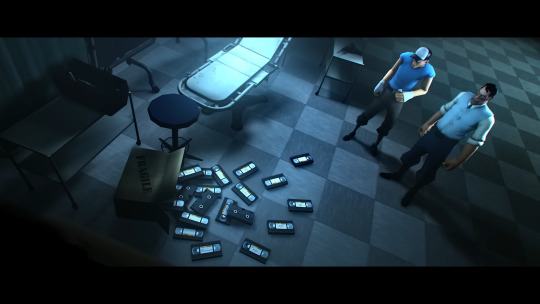
Okay, so I'm late to the party talking about this, since it's been like 10 months since Emesis Blue was released, but I have seen zero people mention this when talking about the various cinematic parallels the film uses, and I think this is a very funny one.
I'm not even sure if this was an intentional parallel on the part of the screenwriter, or just a coincidence, but Emesis Blue included a reference to MacGruber (it was the, "How did you know he wouldn't shoot you in the head?" "I didn't," exchange between Spy and Soldier), so Emesis Blue is not above referencing comedies.


Okay, so early on in Emesis Blue, Scout sees a bunch of tapes knocked over in Medic's office. As he's tidying them up, he notices one tape is labelled "M (1931)."
The implication is that it's M for Medic, and it's footage of Medic from 1931. Scout's medical report (the one Soldier finds) says that he's 23 years old and Emesis Blue is set in 1968. Scout is curious about what Medic was up to before he (Scout) was born, between the wars.
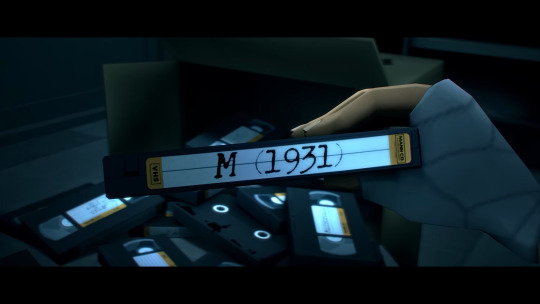
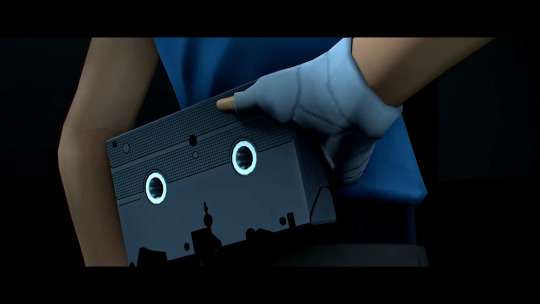
Scout steals the tape.
In a later scene, we see Scout at home, watching a black and white film. This film is 1931's M, directed by Fritz Lang (very good director I can recommend; he also directed Ministry of Fear, a film about a man who gets caught up in a bunch of espionage stuff because he won the wrong cake at a raffle--I enjoyed it enough to re-watch it multiple times). The film is in German, which makes sense, as Medic's first language is German.


While we don't get to see Scout's initial reaction to watching what's in the tape (as we cut to the scene in media res), I imagine it was a mixture of disappointment in himself, upon realising the tape is just a movie and that he betrayed Medic's trust for basically nothing.
Kinda ironic, as his trust in Medic will be tested again and again later in the film.
So, this plot beat reminded me of something. And when it occurred to me what it was, I smiled. Because it's a rather unexpected callback when you remember that Emesis Blue has referenced films that can be described as highly respected, iconic, and (very important here) dark. Films like The Shining, Jacob's Ladder, Se7en, and Dr Strangelove.
The film I'm thinking about is…
2005's The Pacifier.

For those unfamiliar with this film's work, The Pacifier is about a military man who, after failing to protect a scientist, is forced to look after and protect the scientist's 5 children in the suburbs while his boss tries to recover the computer program the scientist was working on. The film's premise is part of the tradition of the "main character (who is usually played by a famous irl wrestler/bodybuilder/martial artist) is an action man who is unexpectedly forced to survive in a domestic setting" subgenre since 1990's Kindergarden Cop.

In this film, the main character (Shane Wolfe played by Vin Diesel), while cleaning the house, comes across a disk labelled "GHOST." This looks significant, because Ghost is the name of the computer program the scientist was working on that everybody is after.

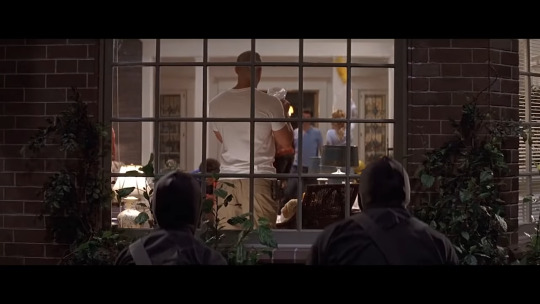
Shane Wolfe, after fighting tooth and nail to protect the disk in an action sequence, pops it into a disk player… and Whoopie Goldberg appears on the screen.
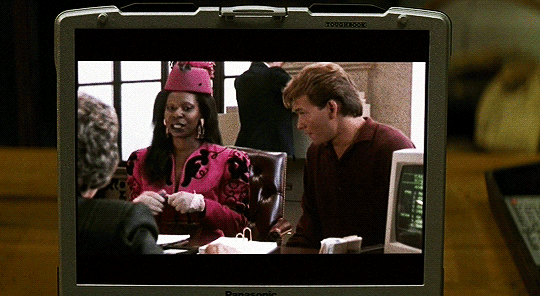
The disk was not the much sought-after computer program. It was the 1990 romance film Ghost, starring Whoopi Goldberg.
Cut to Shane and the kids looking very very disappointed.


(Gif source)
Scout: "Jeez. You got a whole video store in there."
Both The Pacifier and Emesis Blue have a major plot beat where a main character finds a labelled piece of storage media, mistake it as important documents, take it, and then realise it's just a movie. And that is very funny to me. I love it. Cinematic masterpieces. Chef's kiss
Again, this may be entirely unintentional on the part of Fortress Films. Still very funny though.
People who make "Every film reference in Emesis Blue" metas, get on this.
10 notes
·
View notes
Text

GILBERTO GIL, Toronto 1989
If I was doing a portrait session with Gilberto Gil in Rio de Janeiro, I doubt I'd have been doing it in the little cramped office at the nightclub/disco where he was playing. Born in Bahia in 1942, Gil emerged with the post-samba Tropicalia movement, alongside Caetano Veloso, Maria Bethania, Gal Costa, Tom Ze and others. His second, eponymous album, recorded with Os Mutantes and released in 1968 (one of several early albums named after himself; it can get confusing) explored the "psychedelic samba" that was the soundtrack of youthful rebellion in Brazil against the country's government, and in 1969 he was arrested and sent to prison for three months by the military regime.



Gilberto Gil was a huge star in Brazil, but we were just rediscovering Brazilian music in North America when I photographed him backstage at the Copa, a disco and nightclub in the fashionable Yorkville area of Toronto. Gil's music had absorbed influences from rock, jazz, reggae, punk and other genres while remaining identifiably Brazilian, though his outward-looking musical style might have been accelerated by being forced to live in exile for several years after his arrest and imprisonment in Brazil. In the late '80s Tropicalia legends like Gil, Caetano Veloso and Tom Ze were brought to a new audience by releases on David Byrne's Luaka Bop record label, which is probably what brought Gil to Toronto.


Experience trying to shoot the Beastie Boys and Karen Finley at the Copa club inspired me to bring lighting for my shoot with Gilberto Gil, but I obviously didn't have much in the way of backgrounds, so I photographed him against a patch of white wall in an office backstage, cropping tight on his face with my Mamiya C330 to try to capture some of the man's charm and charisma. I have no idea who my client might have been - if I had one at all - but I did end up selling one of these shots to Toronto Life Fashion a few months later, the only time they saw publication. I also shot a roll of film on my new Nikon at the show that night - an evening that has been described as sweaty and delirious by others who were there.

Gil had begun his political career when I photographed him, and had been elected to city council in his birthplace of Salvador. He founded an environmental group shortly afterward, and became a UN goodwill ambassador in 2001. In 2003 Brazilian president Luiz Lula da Silva made Gil the country's minister of culture, and held the post until 2008. He's still recording and playing today, and released his most recent record, Em Casa com os Gils, in 2022.



#portrait#portrait photography#photography#black and white#film photography#some old pictures i took#early work#gilberto gil#brazilian music#tropicalia#brazil#musician#singer#mamiya c330
2 notes
·
View notes
Text
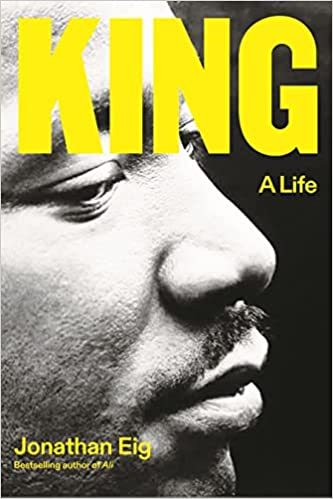
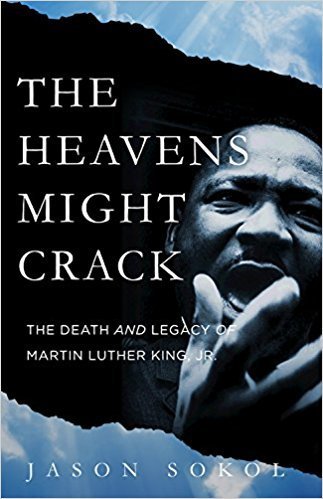

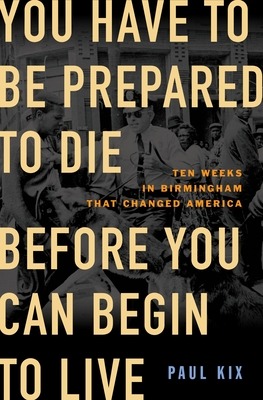
Celebrating the Legacy of Martin Luther King, Jr.
King by Jonathan Eig
In this revelatory new portrait of the preacher and activist who shook the world, Jonathan Eig gives us an intimate view of the courageous and often emotionally troubled human being who demanded peaceful protest for his movement but was rarely at peace with himself. Casting a fresh light on the King family’s origins, as well as MLK’s complex relationships with his wife, father, and fellow activists, this volume reveals a minister wrestling with his own human frailties and dark moods, a citizen hunted by his own government, and a man determined to fight for justice even if it proved to be a fight to the death.
The Heavens Might Crack by Jason Sokol
On April 4, 1968, Martin Luther King, Jr. was fatally shot as he stood on the balcony of the Lorraine Motel in Memphis. At the time of his murder, King was a polarizing figure - scorned by many white Americans, worshipped by some African Americans and liberal whites, and deemed irrelevant by many black youth. In this volume, historian Jason Sokol traces the diverse responses, both in America and throughout the world, to King's death.
The Three Mothers by Anna Malaika Tubbs
Much has been written about Berdis Baldwin's son James, Alberta King's son Martin Luther, and Louise Little's son Malcolm. But virtually nothing has been said about the extraordinary women who raised them, who were all born at the beginning of the 20th century and forced to contend with the prejudices of Jim Crow as Black women. These three mothers taught resistance and a fundamental belief in the worth of Black people to their sons, even when these beliefs flew in the face of America's racist practices and led to ramifications for all three families' safety.
You Have to Be Prepared to Die Before You Can Begin to Live by Paul Kix
In this volume, Paul Kix takes the reader behind the scenes as he tells the story of the Southern Christian Leadership Conference’s pivotal 10- week campaign in 1963 to end segregation in Birmingham, Alabama. At the same time, he also provides a window into the minds of the four extraordinary men who led the campaign - Martin Luther King, Jr., Wyatt Walker, Fred Shuttlesworth, and James Bevel. With page-turning prose that reads like a thriller, Kix’s book is the first to zero in on the ten weeks of Project C.
#martin luther king jr#civil rights#history#nonfiction#reading recommendations#reading recs#book recommendations#book recs#library books#tbr#tbr pile#to read#booklr#book tumblr#book blog#library blog#readers advisory
6 notes
·
View notes
Text
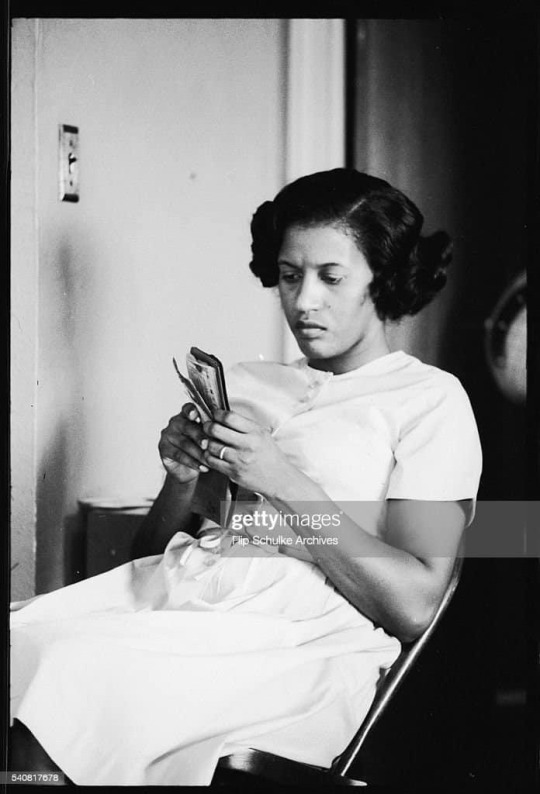

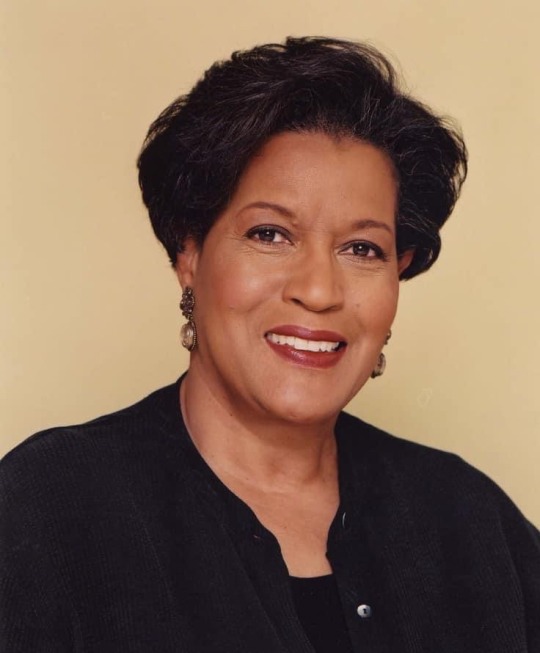


Black History Facts!!!
#Happy90th
#NAACP
Born Myrlie Louise Beasley on March 17, 1933, in her maternal grandmother’s home in Vicksburg, Mississippi. She was the daughter of James Van Dyke Beasley, a delivery man, and Mildred Washington Beasley, who was 16 years old. Myrlie’s parents separated when she was just a year old; her mother left Vicksburg but decided that Myrlie was too young to travel with her. Since her maternal grandmother worked all day in service, with no time to raise a child, Myrlie was raised by her paternal grandmother, Annie McCain Beasley, and an aunt, Myrlie Beasley Polk. Both women were respected school teachers and they inspired her to follow in their footsteps. Myrlie attended the Magnolia school, took piano lessons, and performed songs, piano pieces or recited poetry at school, in church, and at local clubs.
Myrlie graduated from Magnolia High School (Bowman High School) in 1950. During her years in high school, Myrlie was also a member of the Chansonettes, a girls’ vocal group from Mount Heroden Baptist Church in Vicksburg. In 1950, Myrlie enrolled at Alcorn A&M College, one of the few colleges in the state that accepted African American students, as an education major intending to minor in music. Myrlie is also a member of Delta Sigma Theta sorority. On her first day of school Myrlie met and fell in love with Medgar Evers, a World War II veteran eight years her senior. The meeting changed her college plans, and the couple later married on Christmas Eve of 1951. They later moved to Mound Bayou, and had three children, Darrell Kenyatta, Reena Denise, and James Van Dyke. In Mound Bayou, Myrlie worked as a secretary at the Magnolia Mutual Life Insurance Company.
When Medgar Evers became the Mississippi field secretary for the National Association for the Advancement of Colored People (NAACP) in 1954, Myrlie worked alongside him. Myrlie became his secretary and together they organized voter registration drives and civil rights demonstrations. She assisted him as he struggled to end the practice of racial segregation in schools and other public facilities and as he campaigned for voting rights many African Americans were denied this right in the South. For more than a decade, the Everses fought for voting rights, equal access to public accommodations, the desegregation of the University of Mississippi, and for equal rights in general for Mississippi's African American population. As prominent civil rights leaders in Mississippi, the Everses became high-profile targets for pro-segregationist violence and terrorism.
In 1962, their home in Jackson, Mississippi, was firebombed in reaction to an organized boycott of downtown Jackson’s white merchants. The family had been threatened, and Evers targeted by the Ku Klux Klan.
In 1967, after Byron De La Beckwith's release in 1965, she moved with her children to Claremont, California, and emerged as a civil rights activist in her own right. She earned her Bachelor of Arts in sociology from Pomona College. She spoke on behalf of the NAACP and in 1967 she co-wrote For Us, the Living, which chronicled her late husband's life and work. She also made two unsuccessful bids for U.S. Congress. From 1968 to 1970, Evers was the director of planning at the center for Educational Opportunity for the Claremont Colleges.
From 1973 to 1975, Evers was the vice-president for advertising and publicity at the New York-based advertising firm, Seligman and Lapz. In 1975, she moved to Los Angeles to become the national director for community affairs for the Atlantic Richfield Company (ARCO). At ARCO she was responsible for developing and managing all the corporate programs. This included overseeing funding for community projects, outreach programs, public and private partnership programs and staff development. She helped secure money for many organizations such as the National Woman’s Educational Fund, and worked with a group that provided meals to the poor and homeless.
Myrlie Evers-Williams continued to explore ways to serve her community and to work with the NAACP. Los Angeles mayor Tom Bradley appointed her to the Board of Public Works as a commissioner in 1987. Evers-Williams was the first black woman to serve as a commissioner on the board, a position she held for 8 years. Evers-Williams also joined the board of the NAACP. By the mid-1990s, the prestigious organization was going through a difficult period marked by scandal and economic problems. Evers-Williams decided that the best way to help the organization was to run for chairperson of the board of directors. She won the position in 1995, just after her second husband’s death due to prostate cancer. As chairperson of the NAACP, Evers-Williams worked to restore the tarnished image of the organization. She also helped improve its financial status, raising enough funds to eliminate its debt. Evers-Williams received many honors for her work, including being named Woman of the Year by Ms. Magazine. With the organization financially stable, she decided to not seek re-election as chairperson in 1998. In that same year, she was awarded the NAACP's Spingarn Medal.
Sources:
Padgett, John. "MWP: Myrlie Evers-Williams". University of Mississippi. Retrieved October 20, 2011
Goldsworthy, Joan. "Gale - Free Resources - Black History - Biographies - Myrlie Evers-Williams". Gale. Retrieved November 22, 2011.
Myrlie Evers-Williams Biography - Facts, Birthday, Life Story - Biography.com". Famous Biographies & TV Shows - Biography.com. A&E Television Networks. Retrieved November 22, 2011.
Davis, Merlene. "Merlene Davis: Myrlie Evers-Williams doesn't want us to forget". Kentucky.com. Retrieved November 22, 2011.
Jessie Carney Smith; VNR Verlag für die Deutsche Wirtschaft (1996). Notable Black American Women: book II. p. 208.
University of Virginia (June 24, 2013). "Speakers and Guests Bios". virginia.edu. Archived from the original on June 2, 2013.
28 notes
·
View notes
Text
youtube
Scottish Rock legend, Jack Bruce was born on May 14th 1943 in Bishopbriggs.
Jack was born to musical parents who travelled extensively in Canada and the U.S.A, he attended 14 different schools, finishing his formal education at Bellahouston Academy and the Royal Scottish Academy of Music, to which he won a scholarship for cello and composition. He left the Academy and his homeland at the age of 16, because of poverty and discouraged by his professors' lack of interest in his ideas.
After playing with some of the elite of rock during the early 60's and turning down the chance to play in Marvin Gaye's band Jack formed Cream with Ginger Baker, and Eric Clapton. The band were a massive success in just over two years they were awarded their first ever platinum disc for Wheels of Fire.
Jack wrote and sang most of the songs, including "I Feel Free", "White Room", "Politician" and perhaps the world's most performed guitar riff, in "Sunshine Of Your Love". Cream split in November 1968 at the height of their popularity; Jack felt that he had strayed too far from his ideals and wanted to re-discover his musical and social roots.
Bruce went on to collaborate with the likes of Frank Zappa, Lou Reed, Cozy Powell, Gary Moore and Jon Anderson, as well as producing the soundtrack for the Scottish film The Slab Boys, with; Lulu, Edwyn Collins, Eddi Reader and the Proclaimers.
Bruce had suffered a period of declining health, after many years of addictions which he finally beat with clinical treatment, and in 2003 was diagnosed with liver cancer. In September 2003, he underwent a liver transplant, which was almost fatal, as his body initially rejected the new organ. He recovered, and in 2004 re-appeared to perform "Sunshine of Your Love" at a Rock Legends concert in Germany organised by the singer Mandoki. It is this song I have chosen to post today, it was for the ArtWorks Scotland documentary "The Man Behind The Bass", on February 13th, 2012. I looked for the full documentary without success.
Jack Bruce continued to perform in the 10 years or so up to his death of liver disease on 25th October 2014, inrocSuffolk, England. He was cremated at Golders Green Crematorium and his ashes buried under the statue of an angel there.
18 notes
·
View notes
Text
Im here today to talk to you about one of my special interests;
Señor Danny Trejó

This man has lived such a life at age 79; and is still kicking, but I think people don’t really appreciate all this man has been through to be who he is. I genuinely believe his biopic needs to be made bc oh my goodness.
CW: drug usage, incarceration experiences, tough home life, murder, stabbing, death penalty, violence (feel free to lmk more and I’ll add as pointed out)
Also to note; this is a historical summary. Aka the facts with as little of my opinion as I can manage (while considering that I do have a bias), I do not condone the violent acts mentioned. That being said I do sympathize with many actions being a product of circumstance and that this is a man trying to own his past while using his present to make a better future for himself and others. And THAT is why I respect the hell out of him
Ok let’s start this; spoiler alert I look like

By the end
Ok so Im gonna have to categorize this baby; a note, most of this is from his Wikipedia page and subsequent cited sources

Personal

-was born in (1944) as the child of an extramarital affair; his mothers husband was away fighting in WW2 at the time
-He’s been a fan of the LA Rams since their early days (1946) and some of his earliest memories are from sneaking into games as a child
-he fled LA with his family to Texas as a small child bc his father was wanted for stabbing someone. His father turned himself in a year after moving back to LA
-he purchased his childhood home and as of his 2020 biopic, still intermittently lives in it.
-he completed his high school diploma during his stay at Soledad correctional facility (likely during his time in solitary)
-among his many jobs between prison and film; Trejo helped construct the Cinerama Dome in California (now where many of his films have been screened at today) with a construction company as a labourer, a gardener and part time owner of a lawn company
-Trejo has been quoted to still have fears that his life is all just been a dream and that ‘hell wake up in prison with someone urging him to “go get some chow”
-Trejo has been a contributor to several books relating to prison life
-trejo published a cookbook in 2020 and his memoir in 2021
-As of 2020 Trejo owns 8 restaurants; including a taco restaurant, a cantina and a coffee and donut shop. His rainbow cauliflower tacos made the LA times fav recipes of 2017
-He has been married and divorced 4x with 3 children (however he helped raise 2 additional children with his second wife)
-Trejo is a registered Democrat
-battled liver cancer in 2010, moved to be closer to his mom in 2011. She passed while filming the Muppets most wanted in 2013. Although sad, Trejo recalls he didn’t truly break down until Kermit offered his apologies in character (due to his macho personality)
-In 2019 Trejo witnessed a car accident and helped rescue a small ychild from that very wreckage (trapped in the car seat in an overturned SUV)

Prison

-was first arrested at age 10, first incarcerated at age 12 at Eastlake Juvenile Hall
-was in various prisons within the California prison system from 1956-1969 (conflicting accounts say one term may have been till ‘72)
-notable stints include; three years at Camp Glen Rockey in San Dimas for stabbing a sailor in the face with broken glass, a stint in Los Angeles County in 1961 where he met Charles Manson (who Trejo describes as a “dirty, greasy, scrawny white boy” who was an allegedly talented hypnotist), Soledad in 1968 where he hit a guard with a rock during a prison riot on Cinco de Mayo. Due to this he was sent to solitary confinement and faced capital charges and the death penalty. He also completed the 12 step program at this time.
-His most memorable stint was in San Quentin in 1966; his heron use was exacerbated here. Here he was a debt collector and drug dealer; often engaging and witnessing acts of violence and occasional murder. He also picked up boxing in this stint and became both a champion of the lightweight and welterweight divisions throughout his other prison experiences.
-his final prison stint was five years of a ten year sentence, most commonly believed to have ended in 1969 (aged 25)
-he was known as the gossip queen of his cell block in several prisons
Drug Usage and Recovery

- Trejo had been using Marijuana since age 8, heron by age 12, and cocaine by age 13; all introduced by his uncle Gilbert
-Trejo overdosed on first heron fix (also under his uncle’s supervision)
- participated in his first drug deal at age 7
-completed the 12 step program during his time in solitary at Soledad. He has been quoted being sober since completing this program, and is celebrating 54 years in recovery
- Trejo became a substance abuse counsellor in 1973, and is still actively working to help substance abuse cases today
-in the 1980s Trejo worked in Western Pacific Med Corp, assisting with the establishment and operation of sober living houses. He also lived in the houses at this time
-He was called to help assist with the cocaine usage amongst teenagers on the set of Runaway Train (1985)
-Trejos work as an actor was meant to help further his work as a rehabilitation counsellor and he claimed it helped him as clients would recognize him as an actor
-While filming scenes at San Quentin for Blood In, Blood Out; trejo helped a prisoner (Mario Castillo) through the 12 step program and remained in touch after his release. Today him and Mario remain great friends and both speak around the country in both juvenile detention centres as well as rehabilitation centres about their experiences
Film

-his character Machete was created FOR the Spy Kids film
-the creator of the Spy Kids franchise is his second cousin
-Danny originally got into acting after meeting a boy in a sober living house who explained he worked a day job as an extra to make 50$ a day (in 1980); between the “easy money”, availability with his schedule and publicity he could provide to the Western Living House Org, Danny decided to find an agent for background rolls
-After being asked to help with cocaine issues on the set of Runaway Train, Trejo was recognized by the screenplay writer, Edward Bunker. Bunker has been a fellow inmate with Trejo in San Quentin and was also a fan of his boxing work. Bunker helped hire Trejo as a boxing trainer on the film and negotiated Trejos pay to be closer to ~$330 a day, due to his additional help on set and general knowledge/experience
-Bunker also helped land Trejo a role as a background actor in the prison scenes in Runaway
-Penitentiary 3 (1987) was his first billed role, during which he met one of the members of the Galbino crime family (one of the 5 mafia families in New York)
-in 1991 Trejo turned down a role offered by Edward James Olmos due to a call from the don of the Mexican Mafia advising him to take a role in Blood In, Blood Out (1993) instead
-During the filming of Blood In, Blood Out; Trejo experienced PTSD while filming his scenes in San Quentin. Especially when filming the scenes in C550, his previous cell from his time incarnated there
-Whike filming Anaconda (1997), Trejo was able to negotiate a higher salary when filming in Venezuela. As Trejo enjoyed leaving the hotel to socialize in his off time…during a possible coup. A particular incident with a group of teenagers with AK-47s brandished at Trejo over his combat boots, helped Trejo negotiate the higher salary to REMAIN at the hotel in his down time
-Trejo contracted Hepatitis C shortly before filming Spy Kids and concluded treatment and recovery just before its premiere (however had gotten so I’ll that his cast noticed his weight loss and demeanour in a different project filmed during spy kids post production)
-Trejo produced his first film in 2014
-To date Trejo has 445 acting credits on IMDB (between 1985-2023) and 84 on screen deaths (12 TV, 72 movies) according to cinemorge (+4 are music video deaths, +1 video game death)

-in total that would make Trejos risk of onscreen death per project roughly 20% per project (89/445)
In Conclusion

#danny Trejo#in conclusion this is the celeb I would have dinner with#prison#anecdote#san quentin#biography#life summary#long post#but in all seriousness#where is the biopic Hollywood#cw drugs#cw#drugs#murder#violence#drug usage#death penalty#stabbing#feel free to let me know of any more and I’ll put them here
12 notes
·
View notes